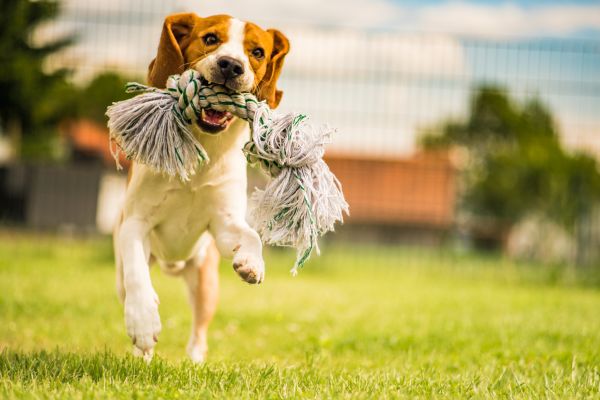Let’s be real—every dog has its quirks. Maybe your pup barks like there’s no tomorrow every time the mailman shows up, or perhaps she chews your shoes like they’re her favorite snack. Whatever the case, understanding dog behavior modification techniques can completely change how you connect with your furry friend. The thing is, behavior isn’t just random; it’s learned. And the good news? It can be unlearned, reshaped, and redirected with patience and the right approach.
Understanding Why Dogs Behave the Way They Do
Before we dive into techniques, it’s important to understand what drives a dog’s behavior. Dogs don’t misbehave just to annoy you—most of the time, they’re trying to communicate or respond to something in their environment. Maybe they’re anxious, bored, overstimulated, or simply confused about what’s expected of them. When we look at behavior through that lens, it becomes easier to modify it without frustration.
Behavior modification isn’t about punishment; it’s about teaching. It’s about helping your dog replace unwanted habits with positive, healthy ones.
The Foundation: Positive Reinforcement
One of the most effective dog behavior modification techniques out there is positive reinforcement. This method focuses on rewarding good behavior rather than punishing bad ones.
Here’s how it works: when your dog does something right—like sitting calmly when guests arrive—you immediately reward that behavior with a treat, praise, or affection. Dogs quickly learn to associate good actions with pleasant outcomes. Over time, they naturally repeat those behaviors to earn more rewards.
Consistency is key here. If you sometimes reward jumping and other times ignore it, your dog gets mixed signals. So be clear, be patient, and be consistent.
Redirection: Teaching a Better Way
Redirection is another crucial part of dog behavior modification. When your dog does something undesirable, like biting the couch cushion, instead of yelling, calmly redirect their energy toward something appropriate. Offer a chew toy, a bone, or a game of fetch.
Dogs, much like people, learn better when they’re shown what to do rather than just being told what not to do. You’re helping them make the right choice without creating fear or confusion.
Desensitization and Counterconditioning
Some behaviors come from fear or anxiety—think of dogs that freak out during thunderstorms or bark excessively at other dogs. For these cases, desensitization and counterconditioning are incredibly helpful dog behavior modification techniques.
Desensitization means gradually exposing your dog to the thing they fear, but at a low enough level that it doesn’t trigger panic. Counterconditioning adds a twist: you pair that exposure with something positive, like treats or play.
For example, if your dog gets anxious hearing the vacuum cleaner, start by turning it on far away and tossing them treats. Slowly, over days or weeks, move closer as they stay calm. Eventually, they’ll start associating that scary noise with good things instead of fear.
Consistency and Timing Matter
Let’s be honest—dogs don’t speak our language. So timing is everything. Rewarding or correcting your dog even a few seconds late can confuse them. The moment they perform a desired behavior, reinforce it immediately.
And consistency? It’s non-negotiable. Everyone in your household should follow the same rules and use the same cues. If you let your dog on the couch but your partner doesn’t, that’s a recipe for mixed signals. Dogs thrive on structure and clarity.
Addressing Aggression the Right Way
Aggression is one of the trickiest behaviors to deal with. It can stem from fear, territorial instincts, or frustration. The key thing here is: never respond to aggression with more aggression. Yelling, hitting, or intimidating your dog will only make things worse.
Instead, observe what triggers the aggression and work with a certified behaviorist if needed. Through controlled exposure, positive reinforcement, and confidence-building exercises, even reactive dogs can learn to stay calm.
The thing is, aggression isn’t always “meanness.” It’s often insecurity wearing armor. Once you help your dog feel safe, that armor starts to come off.
Building Trust Through Patience
Trust is the cornerstone of all dog behavior modification techniques. Without it, your training won’t stick. Dogs need to feel safe and understood. If they associate you with fear or unpredictability, they’ll resist learning.
Spend quality time with your dog beyond training. Go on walks, play together, sit quietly—it all builds a stronger emotional bond. When your dog feels connected to you, they’ll naturally want to listen and please you.
Managing the Environment
Sometimes, the simplest solution isn’t about changing the dog—it’s about changing the environment. If your dog steals food off the counter, the easiest fix is to stop leaving food out. If they bark at every passing car, try using curtains or moving their bed away from the window.
Modifying the environment reduces temptation and helps your dog succeed. Think of it as setting them up to win, not fail.
The Role of Mental and Physical Exercise
A bored dog is a mischievous dog—period. Many unwanted behaviors like digging, chewing, or constant barking come from pent-up energy or lack of stimulation.
Daily walks, puzzle toys, obedience games, and new experiences help channel your dog’s energy in positive ways. Training itself can also be fun—turn it into a game! Dogs love challenges and rewards, and the mental exercise can tire them out just as much as a long walk.
Avoiding Common Mistakes
Many pet owners unintentionally reinforce bad habits. For instance, if your dog jumps up for attention and you push them away while talking, they still get what they want—your attention.
Also, avoid punishing mistakes that stem from confusion. If your dog doesn’t come when called, scolding them when they finally do will only make them less likely to return next time. Instead, reward the good, ignore or redirect the bad, and keep communication clear.
Real Talk: It Takes Time
Let’s be real—behavior change doesn’t happen overnight. Dogs, just like people, need time to unlearn old habits and build new ones. You’ll have setbacks. That’s normal. What matters is sticking with it.
Celebrate small wins. Every quiet walk, every calm greeting, every moment of progress adds up. And one day, you’ll realize the behaviors that once drove you crazy are barely a memory.
Wrapping It All Up
At the end of the day, dog behavior modification techniques aren’t about control—they’re about connection. They’re about helping your dog understand your world while you learn to understand theirs.
By combining patience, positive reinforcement, and consistency, you’ll not only fix problem behaviors but also build a stronger, happier relationship with your pet. Remember, the goal isn’t a “perfect” dog—it’s a balanced, confident, and joyful companion.
Because when you put in the time to understand your dog’s behavior, you’re not just training them—you’re learning from them too. And that’s the real magic of the bond between humans and dogs.


